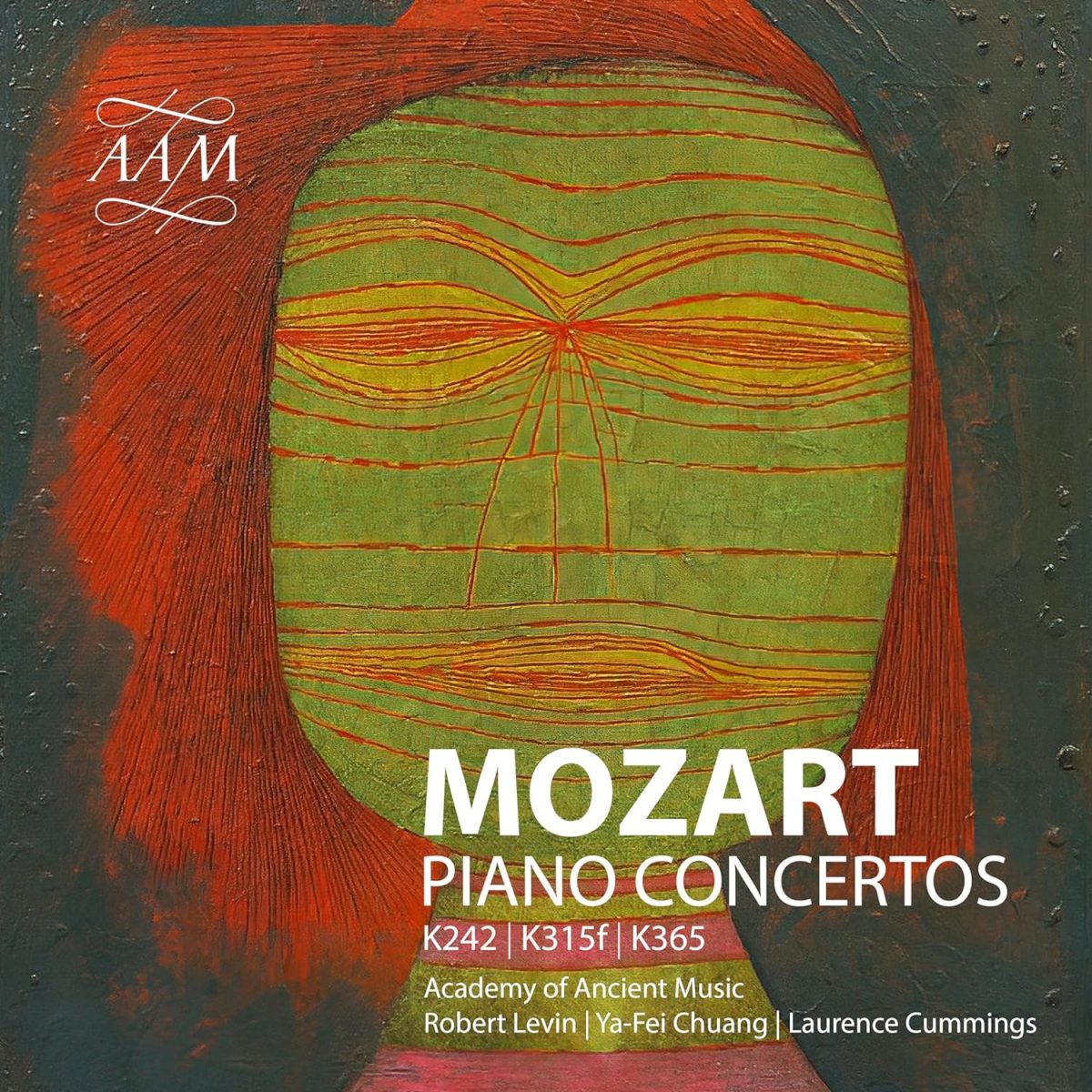K242, K315f, K365
Robert Levin & Ya-Fei Chuang fortepiano, Bojan Čičić violin, Academy of Ancient Music, conducted by Laurence Cummings
60:48
AAM AAM043
Two reviews of the previous issue in this revived series appeared on EMR earlier in 2023, mine in July and that of my colleague D James Ross in October. Well, why not? It’s always interesting to read different reviews of the same concert or CD. On that occasion Ross was rather more enthusiastic than me about an issue that curiously included no music played on the piano (or of course in this case fortepiano). Both Ross and I provided an introduction to the resumption of a series that it seemed for some years was likely to remain incomplete, so I’ll simply refer interested readers to one (or both!) of those reviews.
There is no general shortage of fortepianos on the present CD, though there is a shortage of one such instrument in the case of K242 in F, which is the concerto for three pianos, but here played on a version for two, which Mozart himself later adopted as being more practical. The unusual combination of three concertante instruments – at least in Salzburg, where it was written, if less so in Paris and Mannheim – is explained by it having been composed in 1776 for one of Mozart’s patrons, the Countess Lodron and her two young daughters, age 15 and 11. It conjures up a charming domestic scene, though the countess must have had a salon of substantial size to accommodate three pianos and an orchestra that includes oboes and horns. Not surprisingly most of the leading material is assigned to the first pianist but the demands made on the second are not far behind. Cast in the usual three movements, the most substantial expressively is the central Adagio, the poetic yearning of which suggests a later phase of Mozart’s life. The performance by Levin and Ya-Fei Chuang, his wife, is also at its best in this movement, finding sensitivity not always apparent elsewhere, though the performance is as fluent and agile as always from this source. According to the beautifully produced hard-cover booklet the three-piano version will be included in a future issue, which is surely pushing completeness to the limit.
The only query surrounding the more familiar two-piano Concerto in E flat, K365/316a is a date of composition, which as with the greatest of Mozart’s concertante works, the Sinfonia concertante for violin and viola in E flat, K364/320d, is unknown. Both belong to Mozart’s final years in Salzburg, c 1780, but no purpose for their composition is known and the autograph scores are lost. The performance by the Levins again has a pleasingly natural flow, though the rondo finale opens with a somewhat graceless, clipped orchestral introduction and a speed that could with advantage have been steadier. But there is considerable wit and sparkle in the playing and the wit and touches of rubato from the soloists, not to mention the ever-present fascination of Levin’s renowned improvisatory embellishments stand the performances in good stead. Cumming’s somewhat four-square accompaniment here as throughout again reveal him as a less idiomatic Mozartian than was Christopher Hogwood in the earlier Florilegium issues.
The final work is a fragment from another concertante work, a Concerto for piano and violin in D, KAnh56 (315f), one of a number of works Mozart for one reason or another stopped working on. This one dates from 1778 and his stay in Mannheim on his return journey home from Paris. From a letter to his father we know it was intended for the violinist Ignaz Fränzl, leader of a new ‘academy’ there, but it breaks off after 120 bars, an extraordinary fact given that the work was planned on an unusually ambitious scale not only as to scoring, which includes horns, trumpets and timpani, but scale, the opening orchestral ritornello being of such imposing length and grandeur that it caused Einstein to consider Mozart’s inability to complete the work a major loss. The opening Allegro is given in a reconstruction by Robert Levin, but is disappointing in that the violin tone of Bojan Čičić, at least as recorded, sounds thin. Overall this is a fascinating issue that those collecting the series will want to obtain, but it doesn’t convince completely.
Brian Robins
